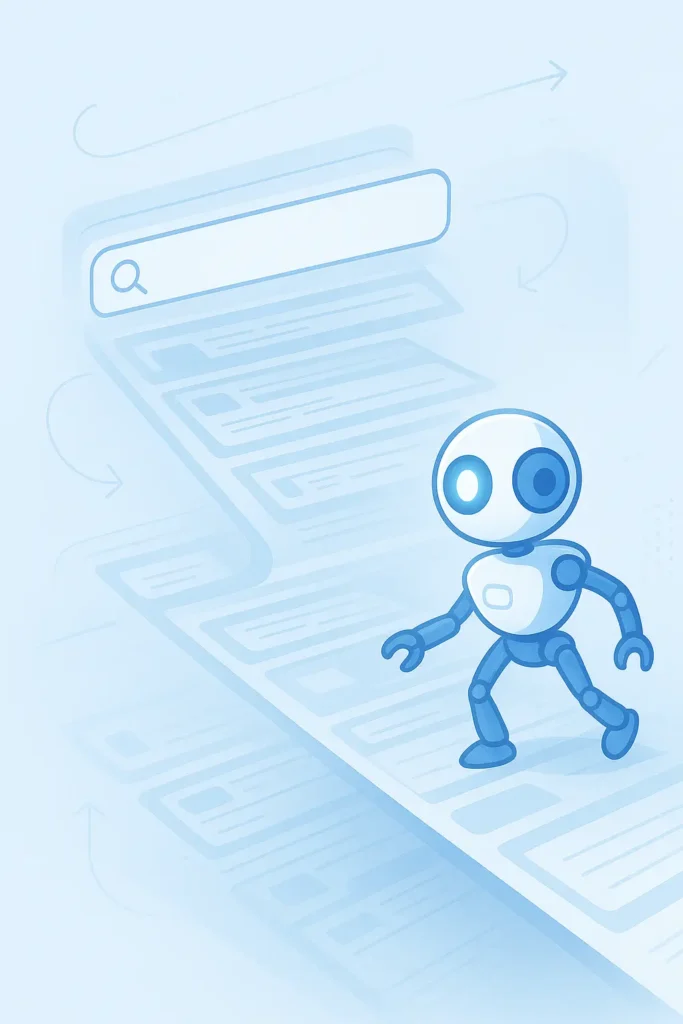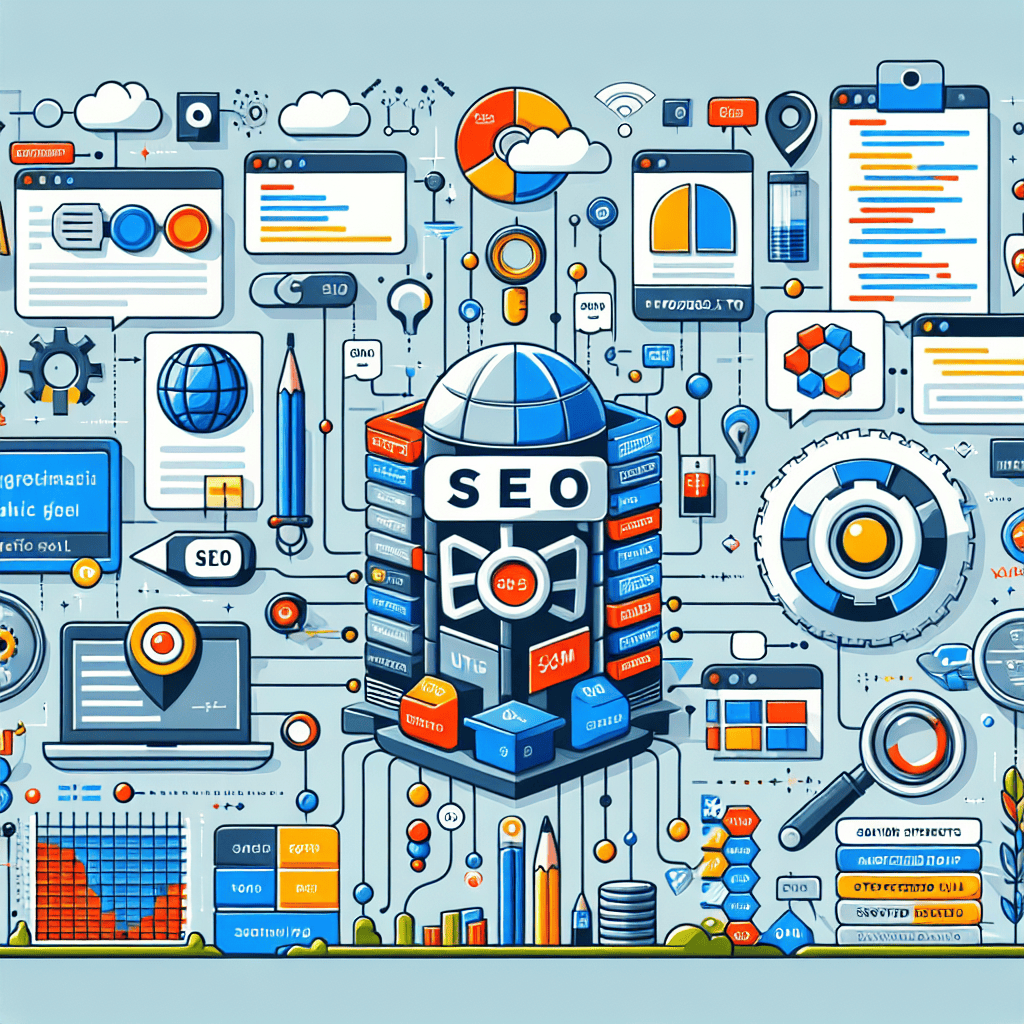The Hidden Struggle Behind Infinite Scrolling
Infinite scroll looks great on the surface. Seamless. Engaging. Addictive. You scroll, more content appears, users stay longer. Feels like the perfect UX upgrade. But here’s the catch—search engine crawlers don’t share the same excitement.
Search bots don’t endlessly scroll. They rely on links, sitemaps, structured signals. So when content lives “deeper” behind infinite scroll or continuous load, much of it risks being invisible to search engines. And invisible content means weaker rankings, wasted crawl budget, and reduced traffic.
The chaos begins when developers prioritize sleek design while overlooking crawlability.
Crawl Budget Meets Endless Pages
Search engines allocate crawl budgets. That means each site gets a limit on how many pages a bot will crawl during a session. Now picture a site with infinite scrolling—hundreds of content chunks loading dynamically.
The crawler may only get the first few pieces. Everything else? Potentially ignored. And when crawlers encounter endless AJAX calls or JavaScript-heavy loading without fallback links, the entire content ecosystem collapses.
So the question: how do you keep UX sleek while keeping crawlers satisfied?
Progressive Enhancement Over Pure Fancy
One of the strongest approaches is progressive enhancement. Don’t make the site dependent on infinite scroll alone. Instead, provide a hybrid system:
- Standard paginated URLs that serve as crawlable anchors.
- Infinite scroll layered on top for user delight.
When a crawler hits /page/2/, it gets proper HTML. When a user scrolls, they see smooth endless content. Both sides win.
It’s a balancing act: usability for humans, structure for crawlers. Ignore one side, and you pay the price.
The Pagination Backbone
Pagination is not outdated. It’s the backbone that makes infinite scroll crawl-friendly. Implement clear URL structures for each set of content.
For example:
/blog/page/1//blog/page/2//blog/page/3/
Each of these URLs should return static HTML versions of the content. That way, search engines can crawl and index everything, regardless of JavaScript execution limits.
The infinite scroll experience can simply overlay this pagination, loading the next chunk as the user scrolls, but still mapping to real URLs.
Why Not Just Rely on JS Rendering?
Because crawlers aren’t flawless at executing scripts. Even if Googlebot executes most JavaScript, there’s lag, and sometimes failure. Other search engines? Worse. Relying only on JS risks partial indexing.
Pagination keeps things safe.
Canonical and Next/Prev Signals
Pagination brings a new question: how do you prevent duplicate content or index dilution? Enter canonical tags and next/prev hints.
- Use rel=”next” and rel=”prev” to help crawlers understand sequence.
- Ensure each paginated page carries a self-referential canonical, not all pointing to page 1.
- Keep meta titles and descriptions unique across pages—no “duplicate meta” nightmares.
This structured approach gives search engines a clean path through your endless content.
Avoid the Crawl Trap of Infinite AJAX
Many developers build continuous load entirely through AJAX with no URL updates. That’s a recipe for disaster. Crawlers see the initial HTML and nothing else.
Instead:
- Update URLs as the user scrolls (
history.pushState). - Make sure those URLs are real and directly accessible.
- Never create fake parameters that serve nothing when crawled.
Every new batch of content should correspond to a valid, crawlable URL.
Performance Signals Still Matter
Here’s a less-discussed angle: speed. Infinite scroll pages often become bloated, as content stacks endlessly in one DOM. That means longer rendering, heavier resources, and worse Core Web Vitals.
For crawlers, bloated performance means slower crawling. For users, it means frustration after long sessions. Solutions include lazy-loading images properly, chunking scripts, and keeping resource requests efficient.
Fast-loading infinite scroll is crawlable infinite scroll.
Structured Data Can Be a Lifeline
If pagination and pushState solutions feel heavy, another reinforcement is structured data. Mark up articles, products, listings with schema.org. Even if crawlers don’t see everything via infinite scroll, structured data can highlight relationships, helping with discovery.
But structured data isn’t a fix-all. It’s a supporting layer, not a substitute for proper crawl paths.
Real-World Example: The Content-Rich Blog
Imagine a news site publishing 20+ articles daily. Without pagination, crawlers might only index the latest handful. Older stories vanish into scroll oblivion.
By adding crawlable /page/2/ and /page/3/, every article surfaces. The infinite scroll interface remains untouched for users, but SEO health skyrockets.
That’s the point: design doesn’t have to fight with crawling. They can complement each other.
The Future: Hybrid Models
As web applications lean more on continuous loading, SEO will hinge on hybrid models:
- Server-rendered pagination for crawlers.
- Infinite scroll for humans.
- PushState synchronization for both.
Crawl chaos isn’t solved by abandoning infinite scroll—it’s solved by smarter integration.
Wrapping It Up
Infinite scroll is powerful, but without structure, it’s a black hole for search engines. Pagination, canonical discipline, URL management, performance tuning—these are the keys.
Want your infinite scroll app to win in search without drowning in crawl chaos? Align design and SEO from the start. And if you’re unsure where to begin, SEO Sets can help shape a roadmap that balances both crawler and user needs.
FAQs
Q1: Does infinite scroll hurt SEO?
It can, if not handled properly. Crawlers may miss content hidden behind continuous load, leading to poor indexing.
Q2: Can I rely only on JavaScript rendering?
No. While Google can render JavaScript, it’s not foolproof. Other search engines may fail. Always have crawlable fallback URLs.
Q3: Should paginated pages be noindexed?
No. Paginated pages must be indexed so search engines can access all content. Just structure them properly with canonical and rel=”next/prev”.
Q4: Is infinite scroll bad for site speed?
It can be. Overloaded DOMs and endless requests hurt performance. Optimize loading, lazy-load images, and chunk scripts.
Q5: What’s the best way to balance UX and SEO?
Hybrid models—offer infinite scroll for users but back it with crawlable pagination for bots. Both needs met, no chaos.


